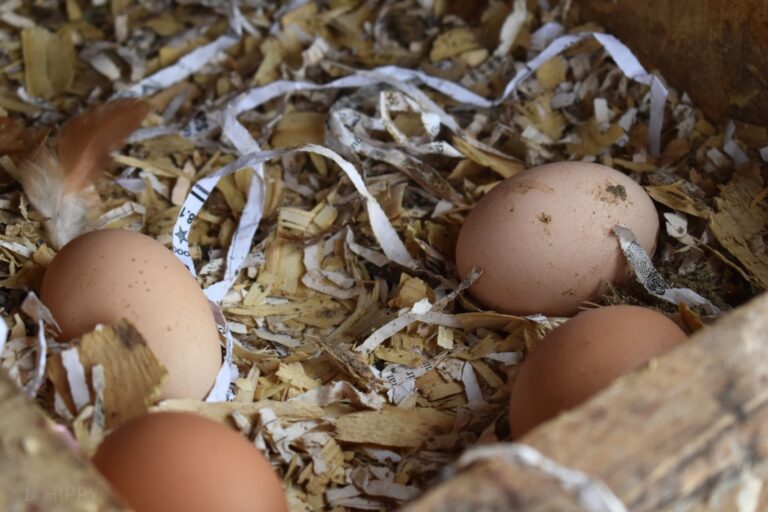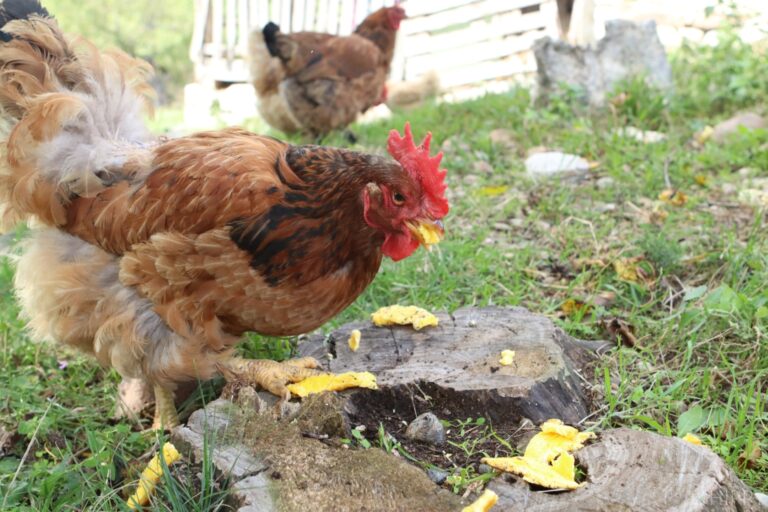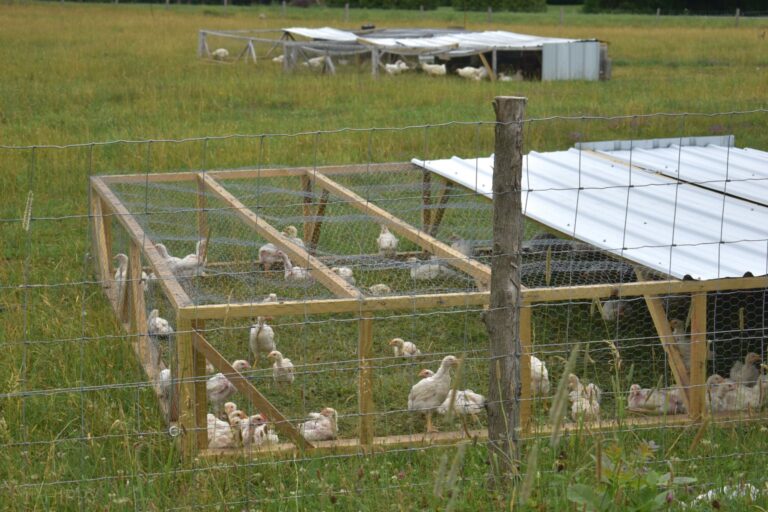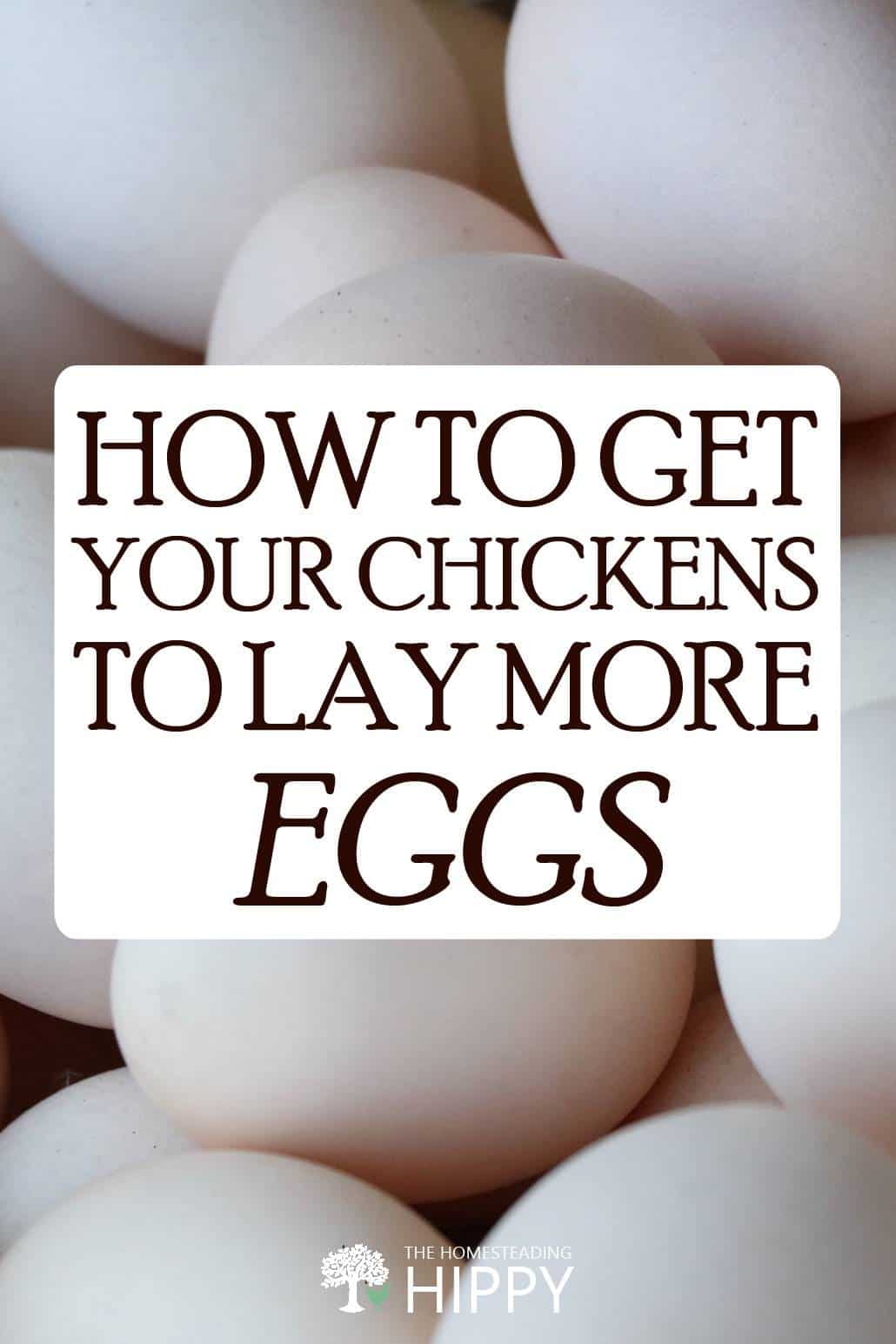If you are raising chickens, there is a good chance that you are doing so to enjoy their delicious, nutritious eggs. The average chicken will lay about one egg every other day, although this varies significantly by breed, disposition, climate, and other factors.

If you’re curious about how to get your chickens to lay more eggs, unfortunately, know that you just might not be able to!
In some cases, what you get is what you are going to get – there is no such thing as a chicken that lays a dozen eggs a day (although if you were able to create one, I’m sure you would become a billionaire quite quickly!).
When my husband and I first started selling eggs to a local restaurant, we quickly found that our daily supply was nowhere near enough to keep up with the demand.
We had a few dozen chickens, and while that was more than enough eggs to keep us and our friends and family in good supply, it wasn’t even close to meeting the number of eggs required by a restaurant.
We tried every trick in the book – many of which helped, but didn’t solve the demand problem. Ultimately, we had to change our chicken breed to the Golden Comet, a much more productive hybrid egg-laying breed.
For many people, though, that kind of solution is unnecessary. If you just want your backyard flock to lay more to keep you and your family in frittatas all week, consider these helpful tips to help your chickens lay more eggs.
Choose the Right Breeds
The first step in having a productive flock of egg-laying chickens is to start with the right breed. Chickens come in many different breeds and not all of them are that good at producing eggs. Some only lay a few eggs each month while others will lay almost every single day.
There are some chicken breeds that are known for going broody, too, which is something that’s cute and awesome if you want to raise your own baby chicks – but not so cute and awesome if you’re trying to up your egg production. You’ll want to avoid broody chickens if that’s your goal.
The best chicken breeds you can choose for egg production include:
- Golden Comets
- White Leghorns
- Rhode Island Red
- Australorp
- Sussex
That is far from an exhaustive list, of course, but a good place to start if you aren’t sure what kind of chickens you want to raise for an egg-producing flock.
Change the Feed
One of the easiest ways to convince your chickens to lay more eggs is to up their calories. As with any animal, you’re only going to get out of your chickens what you put into them.
Therefore, you may find that you need to supply your birds with additional feed to help them produce more eggs.
Don’t be afraid of spending a bit more on egg layer feed. Birds that are laying eggs need more protein as well as more calcium to continue producing eggs. The most productive hens always start with the best diet.
Prepare For Molting
Molting happens just about every year for most chickens, and it usually happens in the fall. This is the process by which chickens release their old feathers and then grow new ones.
Molting is hard on hens because it can be quite painful, and it requires a lot of energy for them to grow new feathers. As a result, they will often stop laying eggs.
There’s not much that you can do to prevent molting (nor do you really want to), but you can take steps to help keep your chickens comfortable. For example, you can make a dust bath for your chickens so that they can get rid of their old feathers faster.
You should also supply your chickens with lots of protein while they are molting. This will help them regrow their feathers more quickly so they can get back to laying eggs for you.
Hang a Light in the Coop
This tip is somewhat controversial, but it’s one that has worked well for us.
The key here is really recognizing the goals you have for your flock of backyard chickens, and acting accordingly based on your needs and plans.
The thing is, chickens have a distinct laying cycle that is directly affected by daylight. Most chickens will be consistent in their egg-laying habits when there is at least 14 hours of sunlight per day.
As soon as fall arrives and daylight hours begin to wane, so, too, will the egg production.
You can combat this by adding a bit of supplemental light to your chicken coop. Your chickens will lay more eggs as the light will essentially “trick” their bodies into thinking it is daytime.
The controversy comes in that there are downsides to “forcing” chickens to lay eggs around the calendar year.
Adding supplemental light is said to burn a chicken out faster because it forces them to use up their egg reserves more rapidly so they will also lay for a shorter period of time.
Some chicken keepers believe their birds need a break from laying in the winter, too, so if this technique is one you don’t want to try, I can’t say I blame you!
Avoid Broody Hens
I already mentioned earlier all of the problems that broody hens can cause for your backyard flock and their egg production. Some hens can go broody several times per year, meaning you will frequently be stuck without any eggs.
The easiest way to deal with this is to avoid acquiring broody chicken breeds (the Sussex, Cochin, Silkie, Brahma, Orpington, and Maran are the broodiest).
However, every now and then, you might just find yourself stuck with a bird that wants to brood. If that’s the case, don’t panic – not all hope is lost!
To deal with it, you’ll want to start by removing the nest. Get that broody bird out of the nest box and she might lose her desire to sit.
You can block her access to the coop and nesting boxes or simply remove the box where she was sitting on her eggs. Taking away her bedding can also break the nesting instinct.
Worst case scenario, you may just have to let her hatch the eggs. It’s not the end of the world, and ultimately, you’ll be rewarded with some adorable, fluffy little chicks!
Supply Some Treats
Aside from changing their feed, you might also want to consider adding some daily treats. There are a few options you can choose from. Mealworms are one of the most popular, as they contain more than 50% protein.
Protein goes a long way in helping hens produce more eggs. Avoid feeding too much, especially if you have hens that aren’t quite laying yet. Otherwise, you can feed about one teaspoon per day.
Feeding mealworms does get expensive, but you can always start your own mealworm farm at home for just a few dollars – and then you’ll have a free, self-sustaining source of mealworms to feed your hens.
Another great option to feed your chickens is some fresh greens. This is an indirect way of boosting your egg supply, and it will likely take some time for you to see the effects.
However, chickens love all kinds of leafy greens, from kale to cabbage, chickweed to dandelion leaves. They have tons of vitamins, minerals, and other nutrients that chickens need for good overall health.
Allowing your chickens to free-range is a good way to provide them with the greens they need, plus it can keep them busy. However, you may want to supplement these later on in the year, particularly if they have dropped off in their laying during the winter months.
Fruits are recommended as well. Watermelon is one great food, as it will supply lots of water and vitamins to your chickens all at the same time. You can feed pumpkins, which have all kinds of healthy fats, or any other fruits and vegetables, too.
You can even turn to store-bought options like scratch grains and cracked corn. You’ll want to be wary of how much of these two treats you feed your chickens – in excess, they can cause your hens to become obese.
There’s not quite as much nutrition in scratch grains as there is in other treats, such as fruits and vegetables. It only has about 8% protein.
However, both scratch grain and cracked corn are foods that can help your chickens become more productive layers, particularly during the winter months when they need extra calories to stay warm.
Supplement Calcium
Chickens also need plenty of calcium to lay their eggs. If you have a hen that isn’t producing as well as she should, consider whipping up a batch of scrambled eggs.
Scrambled eggs are filled with protein, and when eggs are cooked so they aren’t recognizable, you don’t have to worry about your hens deciding to eat their own eggs because they like them so much, either.

When you’re done making your scrambled eggs, you can also reuse the eggshells. Eggshells are loaded with calcium.
You can bake the shells in your oven for about half an hour at 350 degrees F. Crush them up into a powder afterward, and you can supply them to your chickens in their regular calcium feeding tray.
This is much less expensive than purchasing a separate calcium supplement, like oyster shells.
Just make sure you bake the eggshells first to avoid spreading bacteria like salmonella in the shell, and crush them up so your chickens don’t recognize them for what they really are! Again, that can encourage egg eating behavior.
Check for Parasites and Disease
Another common sign why your hens’ laying habits may have dropped off is that they simply aren’t healthy enough to lay.
A healthy hen will have clean feathers, bright eyes, plenty of energy, and a bright red comb. A sick hen will stop laying eggs so she can heal – so watch out for signs of problems such as limping, a droopy tail, a pale comb and wattles, and discharge from the vent area. Hens that keep hiding are also likely to have some sort of disease.
You can prevent most disease and parasite issues by making sure you are adhering to proper spacing in your coop and run.
Birds that have ample room to run and to roam are generally much healthier than those that are confined to a small space.
Keep an Eye Out for Other Stressors
If your chickens seem healthy and their diet is in check – and it’s not the time of year that’s causing a drop in egg production – you now need to rule out any other factors that might be causing your hens to be less productive.
One common one is predators. If there are any signs of predators in or around the coop and run, your chickens simply won’t lay as well.
Watch out for raccoons, coyotes, foxes, and other creatures – even rats can wreak havoc on a flock’s production because they’ll go into the coop and eat the eggs.
You also need to be mindful of your chickens’ living conditions. If you just moved your birds to a new coop or added new chickens to the mix, there’s a good chance that your lying is also going to drop off.
Even something as simple as your hens bullying each other or a fly infestation can cause a drop in production – rule out all potential causes to figure out the root of your specific problem.
Provide Lots of Open Areas
Free-range chickens tend to produce more eggs because they are happier and healthier.
While free-ranging chickens isn’t always possible (it often opens you up to an increased likelihood of predator problems, for instance) it will help increase your egg production for sure.
Consider alternatives like only allowing your chickens to free-range when you can watch them, or using chicken tractors to provide them with access to all the open space they want – but with protection.

Keep Them Supplied WIth Plenty of Fresh Water
You also need to make sure your hens have lots of fresh water at all times. A common mistake that many beginner backyard chicken keepers make is assuming their chickens need less water during the winter.
While that can sometimes be true, often, chickens drink just as much as they do during the summer because they are also eating more in an effort to stay warm.
Plus, you have frozen water that can really disrupt your routine – so make sure you keep your girls in lots of fresh, clean water to help them lay regularly too.
Interact With and Inspect Your Chickens Regularly
One of the best – and easiest! – ways to keep your chickens laying productively is to inspect and interact with them regularly.
Make sure your chickens aren’t suffering from any cuts, broken bones, or other issues. This can help you make sure each bird is at the utmost level of health and will continue to lay properly.
Getting your chickens to lay more eggs isn’t complicated – ultimately, it often just comes down to knowing and understanding your flock! Follow these tips, and you’ll have a bountiful basket of eggs throughout the entire year.


Rebekah is a full-time homesteader. On her 22 acres, she raises chickens, sheep, and bees, not to mention she grows a wide variety of veggies. She has a huge greenhouse and does lots of DIY projects with her husband in her ever-growing homesteading endeavor. Learn more about Rebekah here.

There is alot more to it than people think…Myself included! Thanks for the info! ?